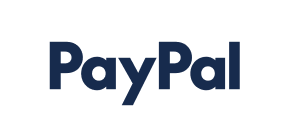See how it works
Get inspired by these sample PRD generator prompts:
Details the user problem, acceptance criteria, and integration requirements across iOS and Android. Includes technical assumptions and edge cases for multi-user permissions.
Working with industry leaders
We’re a proud partner of these globally recognized brands:


















How QuillBot's AI PRD generator works
1
Enter your idea
Share your product concept or feature request in a sentence or two.
2
Tweak your results
Add specific business goals, users, or technical context to fine-tune.
3
Get your PRD
Copy, paste, and use in your roadmap, sprint plan, or pitch deck.
Why use an AI PRD generator?

Generate ideas
Write PRDs with AI-powered suggestions built around your keywords.
Add structure to your work
Get clear, well-structured ideas that provide a strong foundation for your final product.

Save time
Speed up your workflow with strong outputs that are ready to refine, publish, or share.

How to get the best results from QuillBot’s AI PRD generator
Draft a detailed and specific prompt
Follow up until you like the results
Adjust the text to make it your own
Refine your writing with our other AI tools
The AI PRD generator for everyone

Project manager
Align teams with clarity around goals, features, and impact.

UX designer
Document use cases and edge cases to support a seamless build.

Aspiring founder
Turn your product vision into a plan developers can follow.
Why writers love us
AI PRD generator FAQs
What is an AI product requirements document (PRD) generator?
An AI Product Requirements Document (PRD) generator is a tool that uses artificial intelligence to turn your product idea into a structured, professional brief. By inputting details like goals, features, and audience, it quickly creates a PRD with sections such as objectives, user stories, technical requirements, and success metrics.
What is a PRD?
A PRD outlines what a product or feature should do, why it matters, and how success will be measured. It helps align product, design, engineering, and stakeholders around the same vision. A good PRD is the foundation of a well-built product.
What are the essential components of a well-written PRD?
A strong PRD typically includes the product goal, background, user stories, key features, success metrics, constraints, and edge cases. Including these ensures that everyone involved understands the what, why, and how. The more thorough your PRD, the smoother your build process will be.
Who can use QuillBot’s PRD?
Anyone involved in product development—product managers, startup founders, UX designers, or even engineers—can benefit from the PRD generator. It’s also a great tool for students and professionals learning product management. No prior writing experience is required.
What kind of inputs are needed to create a high-quality PRD using an AI PRD generator?
You'll want to include your product's goal, a brief background, target users, key features, and any known constraints. The more context you provide, the more relevant and polished your draft will be. Think of it like giving your AI collaborator a great briefing.
What are the key benefits of using an AI PRD generator?
It saves hours of writing and structuring while helping you stay consistent and complete. You can focus more on strategy and execution, not formatting. Plus, it’s great for jumpstarting drafts when you’re stuck or short on time.
What is the difference between a PRD and an MRD?
A PRD outlines what will be built, while an MRD (Market Requirements Document) focuses on what the market needs. MRDs inform the why, while PRDs define the what. Both are crucial, but they serve different phases of the product lifecycle.
Can a PRD generator be used for existing products, or is it only suitable for new product ideas?
It works for both. You can generate PRDs for brand-new products, new features on existing products, or even refinements to legacy systems. Just tailor the input to match your current project stage.

